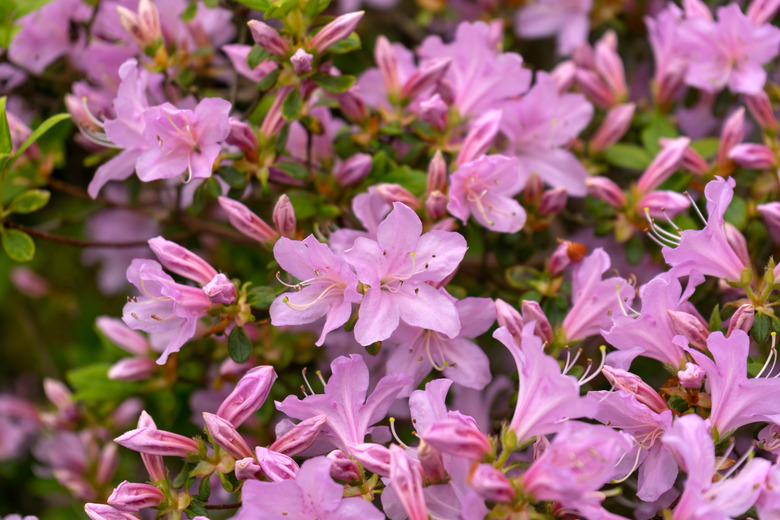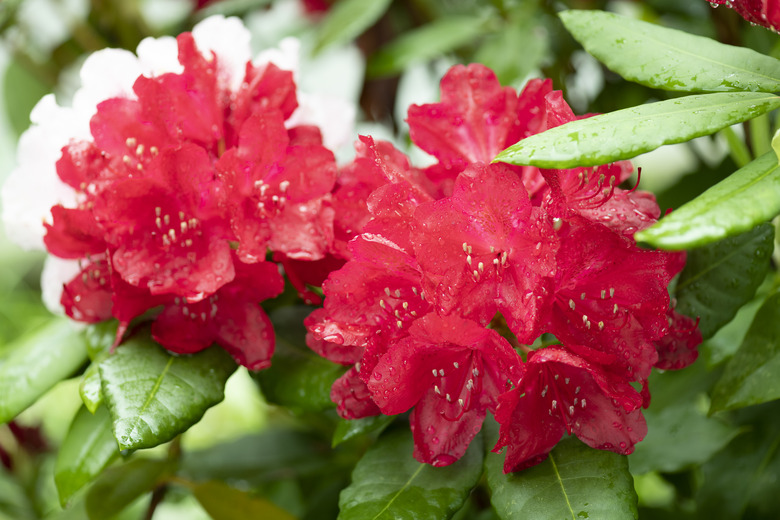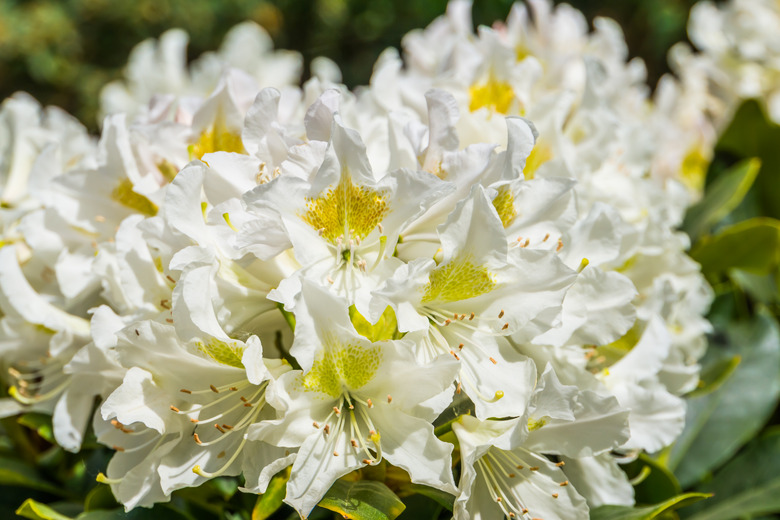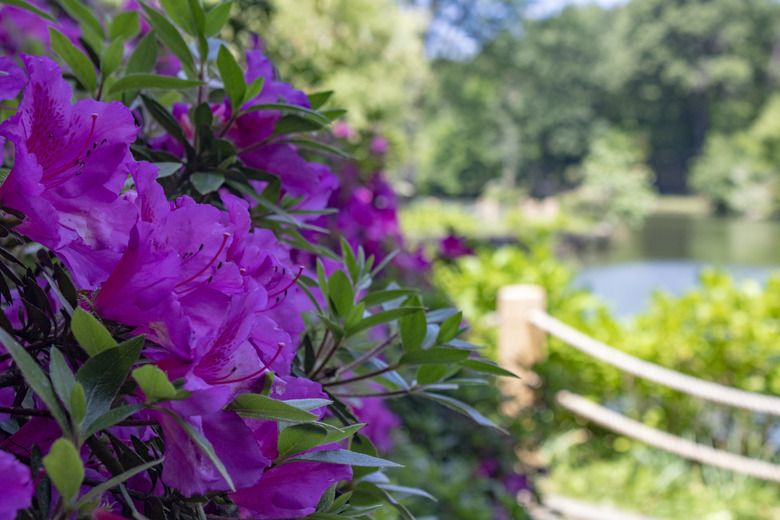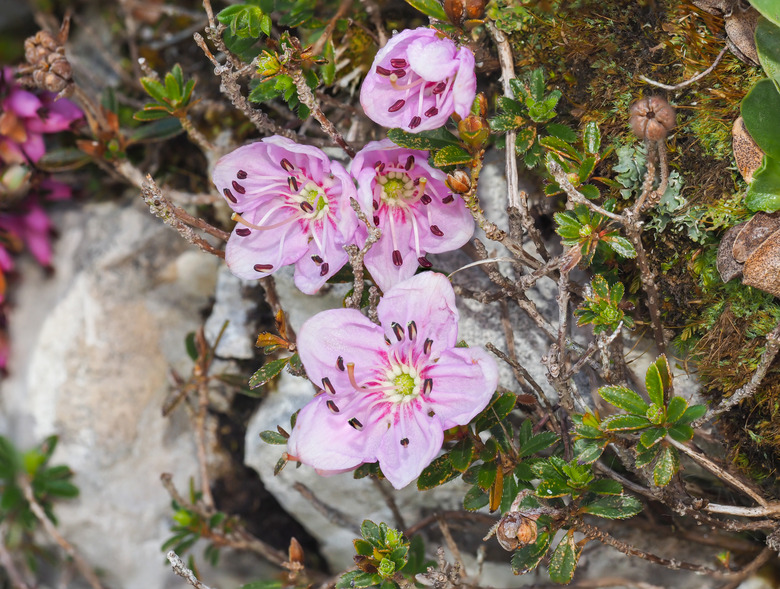How And When To Prune Rhododendrons
Rhododendrons is a genus of flowering woody shrubs that are enormously popular, at least partly because they are very easy to care for. Unlike many shrubs, Rhododendrons seldom require pruning, although they may benefit from an occasional maintenance trim. Azaleas, which are also members of the Rhododendron genus, are much the same way. Pruning either plant from the inner branches outward helps it stay healthy if the plant becomes overgrown or when inner stems appear spindly and weak.
How to Deadhead Rhododendrons
How to Deadhead Rhododendrons
Deadheading—the systematic removal of spent flowers—is not essential for rhododendrons in the way that it is for many other flowering plants, but it does have benefits. Deadhead rhododendron and azalea flowers soon after they've wilted to help prevent fungal problems. This process also helps ensure an abundance of flowers next year, although the plant will still bloom then even if you forgo deadheading.
Remove spent clusters of flowers by snapping the stem or truss just beneath the cluster, without damaging the adjacent stems. Inspect this part of the truss before snapping it to note any new shoots or buds below the flower cluster. Leave these intact, as these are the early stages of next year's growth. The truss should snap off by hand without using any tools.
If you prefer to use a tool to ensure a clean cut without damaging the plant, use sharp hand-bypass pruners. As with any pruning or deadheading job, sanitize the tool first by wiping the blades down with rubbing alcohol.
Deadheading for Petal Blight
Deadheading for Petal Blight
A fungal disease called petal blight can spread rapidly on the blooms of both rhododendrons and azaleas. This blight leaves brown spots on blooming flowers, causing them to wilt or drop petals prematurely. Removing affected blooms helps prevent the problem from spreading throughout the plant or to other plants nearby.
Remove any affected flower clusters by snapping them off, as with regular deadheading. If you use shears, disinfect them after every cut to avoid spreading blight. Do not drop the affected flowers on the ground, or they could spread the blight. Discard blighted blooms in the trash, including any blighted petals that have naturally fallen off the plant. Avoid putting blighted flowers in compost piles as well, as the fungus could spread when you later apply the compost around plants or use it as a soil amendment.
More important than deadheading, though, is the various methods of pruning rhododendrons to improve their shape or overall health.
Tips for Pruning Rhododendrons
Tips for Pruning Rhododendrons
- The best time to prune rhododendrons is after a full flush of blooms. This applies to both evergreen and deciduous azalea varieties. Pruned at this time, the plant has plenty of time to develop new wood; this growth will become next year's old growth, which will produce the spring flowers.
- Avoid pruning when the plant is flowering or just about to flower, although it's fine to prune a few stems now and then for a flower arrangement.
- Pruning for maintenance or shaping purposes can be done in early spring or the end of winter, while the plant is still fairly dormant. This may sacrifice a few blooms, however.
- Avoid pruning the coldest winter months, as the plant may have difficulty recovering. Even in a warm southern climate, pruning in winter can be hard on the plants.
How to Prune Rhododendrons
How to Prune Rhododendrons
The best way to prune a well-established rhododendron is from the inside, working outward. Both rhododendrons and azaleas tend to produce twiggy growth in the areas closest to the center of the plant, not visible from afar. These twigs receive little light or airflow and they crowd one another out. Removing some of this growth improves the health of the entire plant.
Trim spindly inner growth, as well as dead branches, by cutting them with hand bypass shears, using loppers for thicker branches. Trim back to just before the stem meets a main "trunk" or a larger stem. If trimming only part of a stem off, cut it back to a point just above new buds, leaves or stems.
Trim sucker shoots, a common issue with azaleas, back to ground level. Don't attempt digging these out or use an herbicide, as they're attached to the main plant.
Pruning for Shape
Pruning for Shape
In many cases, both rhododendrons and azaleas are best left as-is when it comes to their over-all shape. If one of your plants does need a little shaping, early spring or late winter near the end of the dormant season is the best time to shape it, depending upon your region. Plants in warm, relatively frost-free southern climates can be pruned in late winter, while plants in colder northern climates may stay dormant longer.
Trimming rhododendrons for shape tends to sacrifice a few blooms. To prevent too much flower loss, look for pink dots, called latent buds, on the bark of the plant. Cut overgrown branches above these dots whenever possible. The fewer branches you prune at this time, the better.
Some experts advise treating azaleas a bit differently than rhododendrons when in comes to pruning for shape. Cut back the tops of the plant in early summer to help keep the plant compact, or use shears to trim an evergreen azalea into an attractive shape. For each branch you plan to trim, follow the stem down a couple inches beneath surrounding branches and make the cut at this point. Avoid major shaping of the plant once the middle of summer arrives, as this is when next year's growth begins.
While some use electric hedge trimmers on azaleas to create a boxy hedge shape in warm-climate areas, this practice makes the plant produce flowers and leaves only on the outer perimeter of the hedge. Shearing by hand allows for selective pruning that creates a more lush plant.
Pruning for Rejuvenation
Pruning for Rejuvenation
If the plant is in such bad shape that you're considering removing it from the garden, try a major pruning instead. In early spring while the plant it still dormant, cut back most of the twigs protruding from the main trunk-like branches. Cut one of the main branches until it's about 6 inches above the ground, leaving a couple of the other main branches about 2 feet tall. This last-ditch attempt can sometimes bring the plant back to vigorous life.
An alternate method is cut just a single branch back severely as a test. If the plant recovers nicely during the growing season, feel free to cut one of the other main branches down low early next spring. Trimming evergreen azaleas down to 1/3 of their height at this time is also a good way to manage completely overgrown shrubs. Within weeks, the plant forms new branches and leaves, looking full and healthy once again.
References
- Garden Mentors: How to Prune Rhododendrons
- Harvest Power: Pruning Rhododendrons and Azaleas
- Azalea Society of America: Frequently Asked Questions
- Azalea Society of America: Pruning
- The American Rhododendron Society: Pruning and Spent Flower Removal
- University of California: Azalea and Rhododendron Petal Blight
